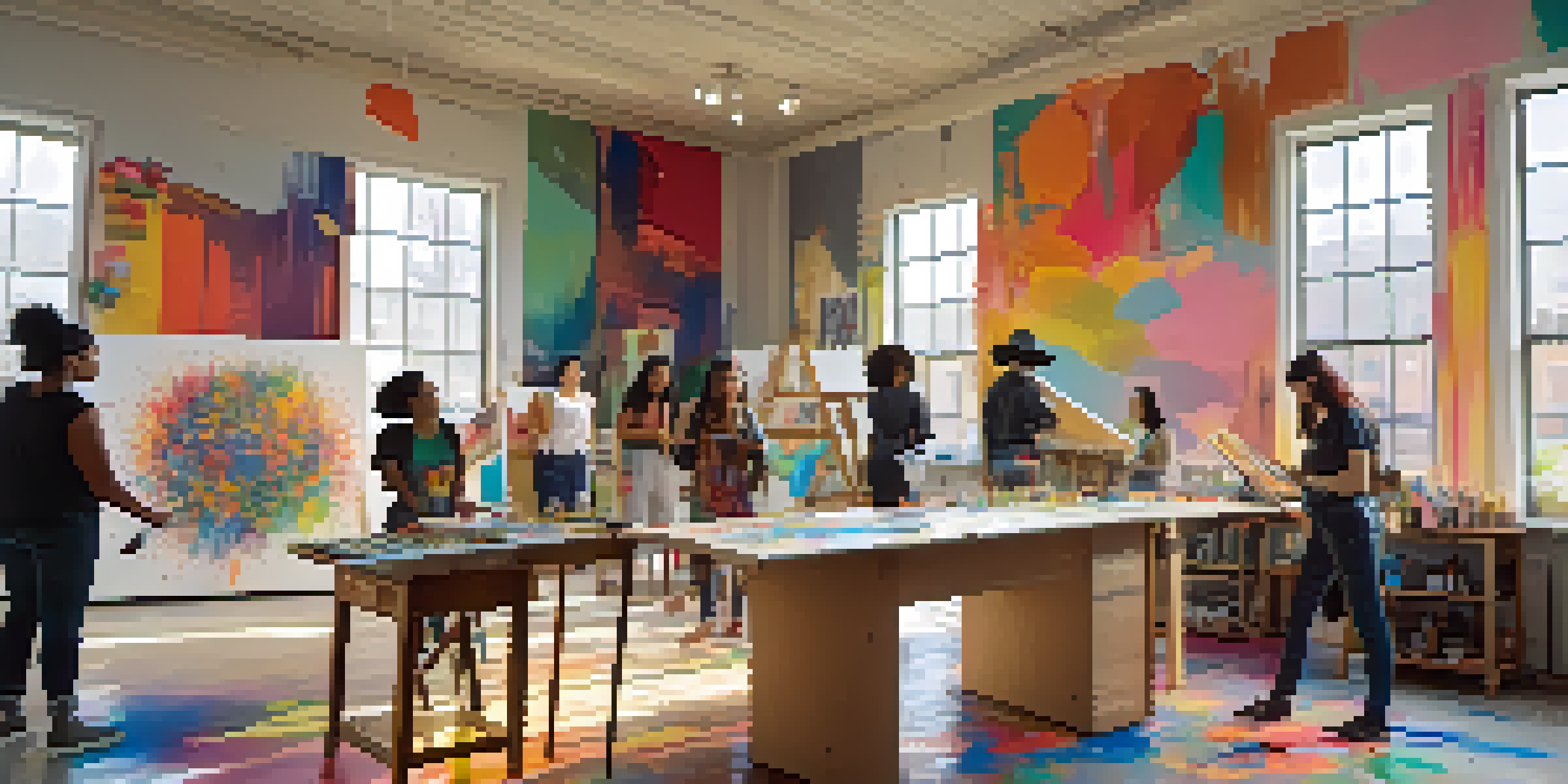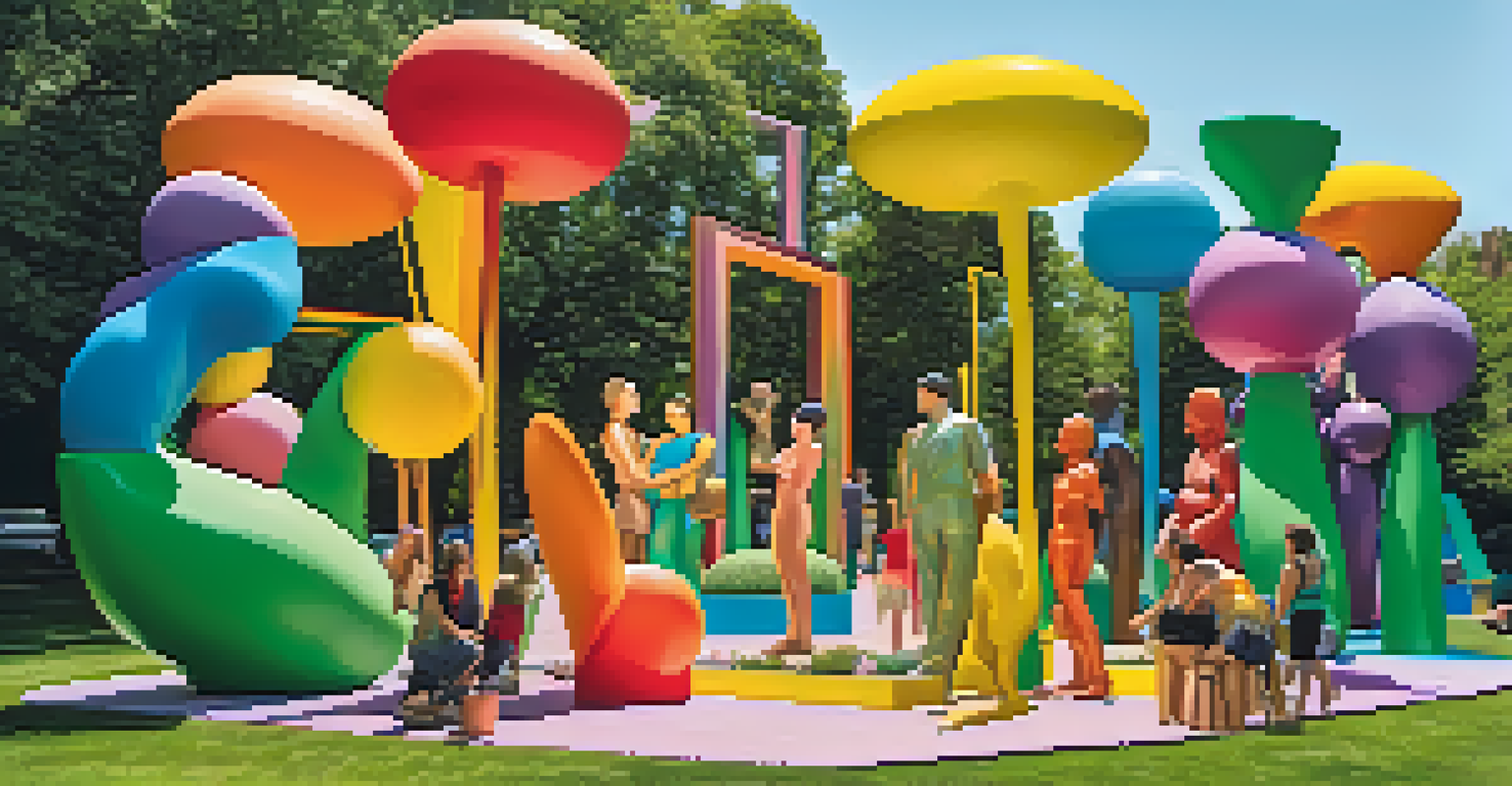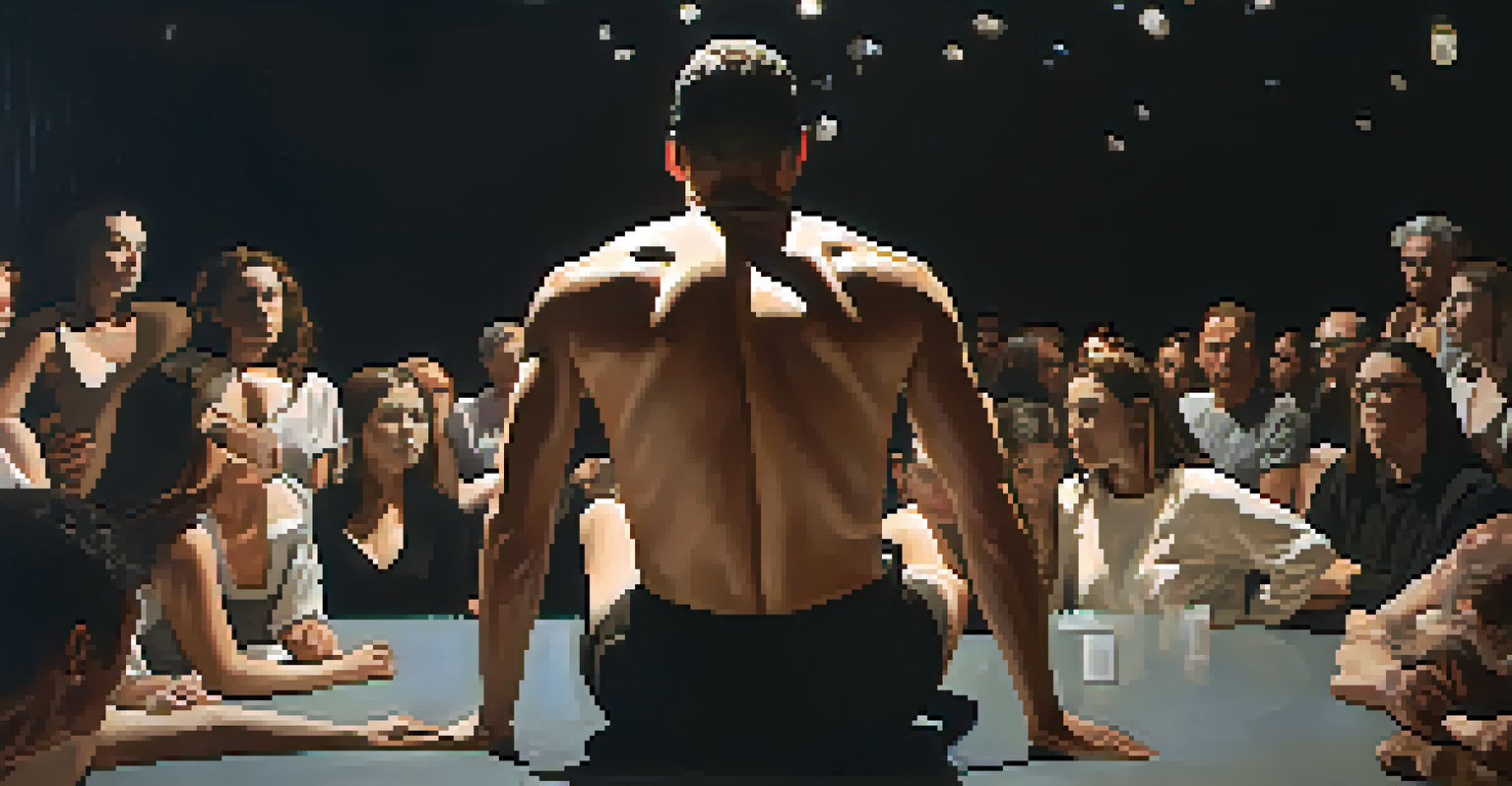Art and Gender: Challenging Inequality Through Creative Means

Introduction: The Intersection of Art and Gender
Art has always been a powerful medium for expression, and when combined with gender issues, it takes on a transformative role. It allows individuals to explore and challenge societal norms surrounding gender, creating a dialogue that can lead to change. By examining art through a gendered lens, we can uncover how creativity can serve as a catalyst for gender equality.
Art is a way of survival.
Throughout history, many artists have used their work to highlight gender disparities and advocate for social justice. This intersection of art and gender not only raises awareness but also fosters empathy and understanding among diverse audiences. Through various forms of art, from painting to performance, the conversation around gender inequality is both amplified and enriched.
In this article, we will explore several dimensions of how art challenges gender inequality, showcasing the remarkable works of artists and movements that are making a difference. From visual arts to literature, we’ll see how creativity can inspire change, encouraging us all to rethink our perceptions of gender.
Historical Context of Gender in Art
To understand the current landscape of art and gender, we must first look back at history. Traditionally, the art world has been dominated by male perspectives, often sidelining women's contributions and experiences. This historical imbalance has shaped the narratives we see in galleries, museums, and art markets today.

Many women artists have faced significant barriers to recognition, often having their work dismissed or appropriated by male counterparts. However, the feminist art movement of the 1970s marked a pivotal point, bringing attention to these inequalities and celebrating women's voices in art. This movement not only challenged existing norms but also laid the groundwork for future generations of female artists.
Art as a Catalyst for Change
Art serves as a powerful medium for expressing and challenging societal norms around gender, fostering dialogue and promoting gender equality.
As we reflect on this historical context, it becomes clear that acknowledging past injustices is crucial for understanding the ongoing struggle for gender equality in the art world. By recognizing the contributions of women and marginalized genders, we can appreciate the richness that diverse perspectives bring to artistic expression.
Contemporary Artists Challenging Gender Norms
Today, numerous contemporary artists are pushing boundaries and redefining gender through their work. For instance, artists like Frida Kahlo and Yayoi Kusama have used their personal experiences to highlight themes of identity, femininity, and mental health. Their art resonates with many, encouraging viewers to confront their own biases and assumptions about gender.
I think the best way to communicate is through art.
Moreover, artists such as Zanele Muholi and Cassils are actively challenging societal norms by exploring themes of race, sexuality, and gender fluidity. Their powerful works invite audiences to reconsider traditional notions of gender and embrace a more inclusive understanding. Through photography, performance, and mixed media, these artists are making significant strides in the fight for equality.
This new wave of artists demonstrates that creative expression can be a potent tool for activism. By sharing their unique perspectives, they inspire conversations that challenge the status quo and promote awareness around gender issues.
Art as a Tool for Advocacy and Activism
Art has the unique ability to evoke emotions and provoke thoughts, making it an effective tool for advocacy and activism. Many artists leverage their platforms to raise awareness about gender inequality, using their work to spark conversations and mobilize action. This approach transforms art into a vehicle for social change.
For example, the #MeToo movement has inspired countless artists to create works that reflect their experiences with sexual harassment and violence. Through visual arts, literature, and performance, these creators are sharing their stories and amplifying the voices of those who have been silenced. This collective expression not only validates individual experiences but also fosters solidarity within communities.
Historical Gender Inequities
The art world has historically marginalized women's contributions, but movements like feminism have begun to rectify these imbalances.
By using art as a means of advocacy, artists can engage audiences in ways that traditional activism may not. This creative approach encourages empathy and understanding, paving the way for a more informed and active public response to gender inequality.
Exploring Gender Through Diverse Mediums
Art is not confined to one medium; it encompasses a vast array of expressions, each offering unique perspectives on gender. From sculpture and painting to digital media and performance art, these diverse forms allow artists to explore gender in multifaceted ways. Each medium brings its own strengths, enabling deeper engagement with complex themes.
For instance, performance art often provides a visceral experience that can challenge societal norms in real-time. Artists like Marina Abramović have used their bodies as canvases to confront issues of identity and vulnerability. Through such performances, audiences are invited to reflect on their own perceptions of gender, often leading to powerful realizations.
Similarly, digital art has emerged as a contemporary frontier for exploring gender issues, particularly among younger generations. Social media platforms serve as both a gallery and a space for dialogue, allowing artists to reach global audiences. This accessibility fosters a sense of community and encourages collaboration among artists from diverse backgrounds.
The Role of Education in Promoting Gender Equality
Education plays a crucial role in promoting gender equality within the art world. By incorporating gender studies into art education, institutions can foster a more inclusive environment that celebrates diverse perspectives. This foundation not only empowers future artists but also encourages critical thinking about gender issues.
Programs that focus on the history of women and marginalized artists can help challenge the traditional narratives often found in art curricula. By exposing students to a broader range of artistic voices, educators can cultivate a deeper appreciation for the contributions of all genders. This inclusive approach can inspire students to create work that reflects their experiences and challenges societal norms.
Diverse Mediums Expand Perspectives
Various art forms, from performance to digital media, provide unique avenues for exploring and understanding complex gender issues.
Moreover, workshops and community art initiatives can provide platforms for underrepresented voices to share their stories. These educational efforts not only enrich the art community but also contribute to the ongoing dialogue surrounding gender equality, creating a ripple effect that extends beyond the classroom.
Conclusion: The Future of Art and Gender Equality
As we look toward the future, the intersection of art and gender continues to evolve. The ongoing dialogue surrounding gender equality challenges artists to push boundaries and explore new narratives. This creative exploration is essential for fostering a more inclusive art world that embraces diverse perspectives.
By supporting artists who challenge traditional gender roles and advocating for equitable representation, we can contribute to meaningful change. This collective effort not only enriches our cultural landscape but also inspires future generations to engage in the conversation around gender equality.

Ultimately, art has the power to transcend barriers and unite us in our shared humanity. By harnessing this potential, we can continue to challenge inequality through creative means, ensuring that diverse voices are heard and valued in the ongoing pursuit of gender equality.